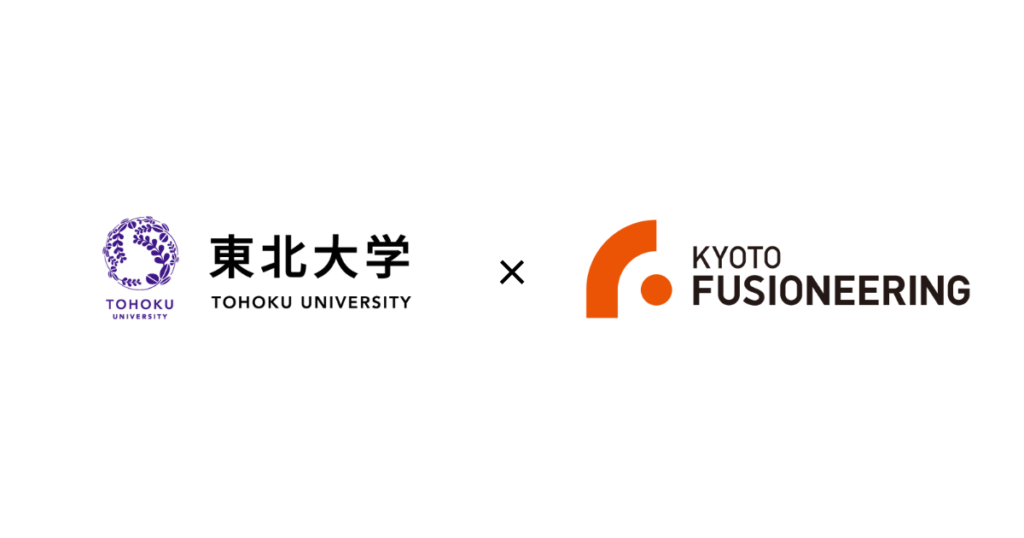Research Area: Evaluating and handling tritium and activated materials essential for operating fusion power plants
The Graduate School of Engineering, Tohoku University (Tohoku University), and Kyoto Fusioneering Ltd. (KF) have signed a joint research agreement to evaluate and handle tritium and activated materials, both essential for operating future fusion power plants.

1. Joint Research Agreement Overview
Since tritium, one of the fuels used to sustain fusion reactions, is a radioactive substance, it must be handled according to strict safety measures. In a fusion power plant, a portion of the tritium supplied to the reactor as fuel does not undergo fusion and is discharged from the reactor and mixed with other gases. Tritium and deuterium are then separated and recovered from this mixed gas and can be reused as fuel. As a result, tritium circulates both within the reactor and also through various components and piping. Ensuring safety requires both accurate measuring of tritium and selecting structural materials that minimize tritium absorption and permeation.
Another critical challenge is understanding the behavior of radioactive materials (activated materials) that are generated when neutrons produced in fusion reactions interact with atomic nuclei in structural materials. This issue is particularly pressing as private-sector-led fusion energy demonstration projects, such as FAST (Fusion by Advanced Superconducting Tokamak), aim to generate power by the 2030s. Therefore, it is both urgent and essential to develop technologies for handling tritium and activated materials.
In response to this need, Professor Yuji Hatano of the Graduate School of Engineering, Tohoku University—a leading researcher in tritium-related studies—will collaborate with KF, a fusion technology developer with expertise in engineering and technology, to conduct research on evaluating and handling tritium and activated materials.
2. Joint Research Agreement Details
Both parties will collaborate on the following initiatives to fully prepare for fusion energy power generation*, including the FAST Program, from the 2030s:
- Investigating tritium measurement methods
- Evaluating material durability under irradiation and in tritium environments (selection of structural materials)
- Researching waste management policies
*Note: Power generation here refers to producing energy via fusion reactions, which does not necessarily imply net positive power production where electricity output exceeds electricity consumption.
3. Comments from Both Parties
Professor Yuji Hatano – Graduate School of Engineering, Tohoku University
I am very encouraged by the growing momentum among industry, government, and academia toward making fusion energy a reality. In terms of safety, it is essential to ensure that the technologies we are developing are safely managed since handling a certain amount of radioactive materials is unavoidable in fusion power plants. It is also very important to train and develop personnel who can safely handle radioactive materials. I hope to continue to address these key challenges through this joint research with KF, who is playing a leading role in fusion power plant development.
Yoshifumi Kume – Vice President of Plant Technology, Kyoto Fusioneering Ltd.
I feel that this collaboration with Professor Hatano, a leading expert and pioneer in tritium research, is a very important step for us. We have been working closely with Professor Hatano, who has been providing valuable advice based on his in-depth expertise and decades of experience. I’m confident that, by jointly conducting research on tritium measurement, evaluation, and the selection of structural materials, this collaboration will significantly advance the development of our Fusion Fuel Cycle System.**
**Note: The Fusion Fuel Cycle System, which is composed of a series of systems essential for fusion power plants, is designed to continuously sustain fusion reactions within the reactor. Within the system, the mixed gases are released from the reactor, deuterium and tritium, the fuel sources for fusion, are separated and recovered, and then they are supplied back into the reactor as fuel.




